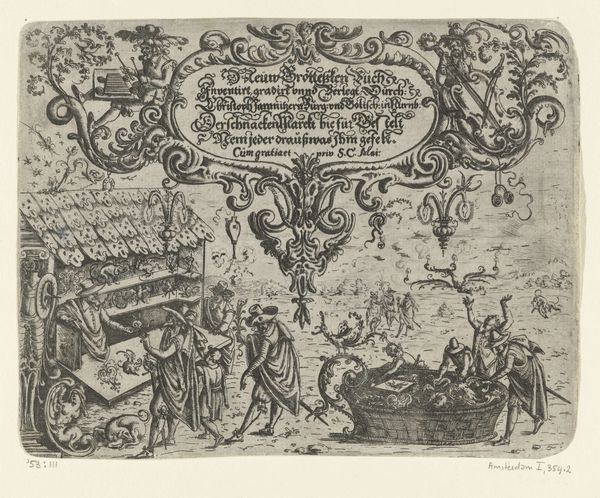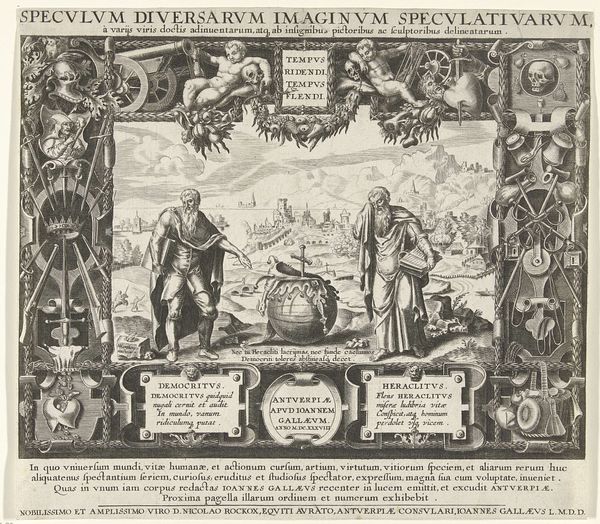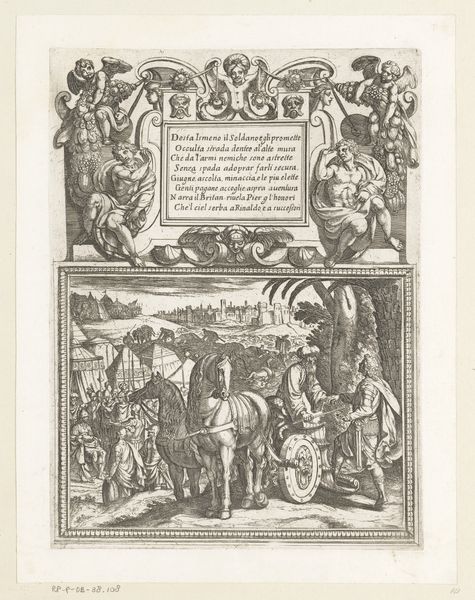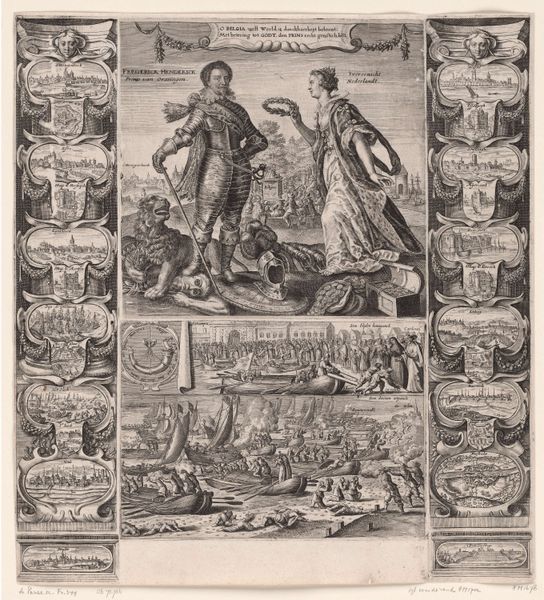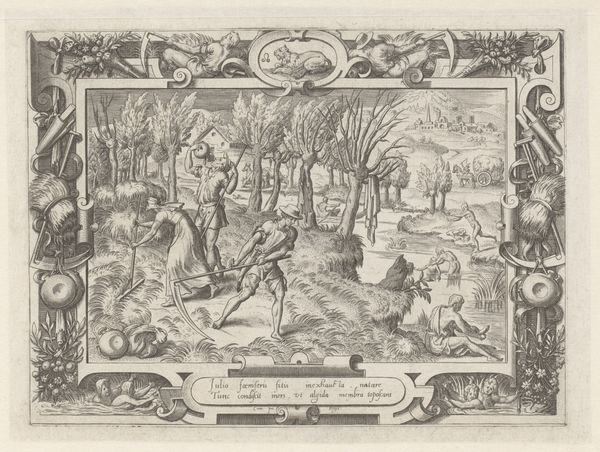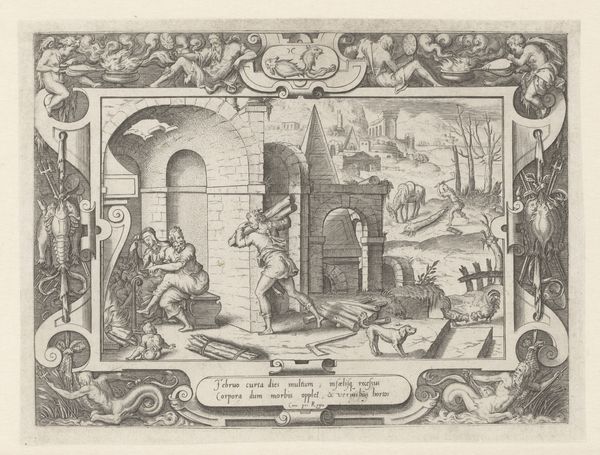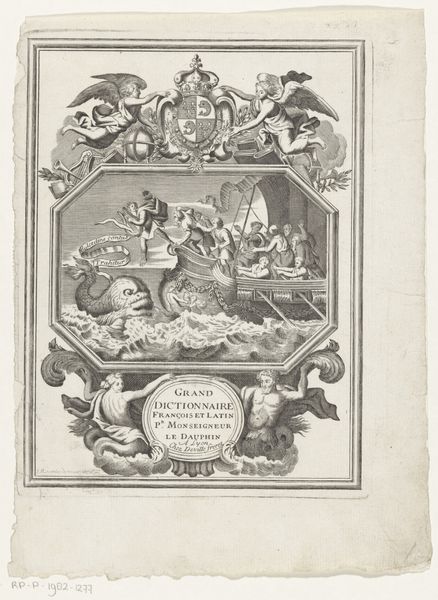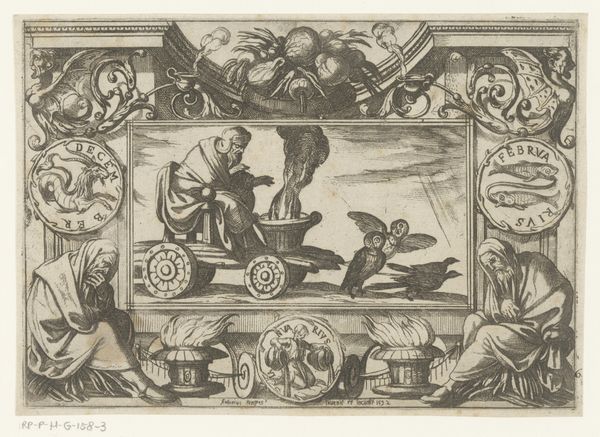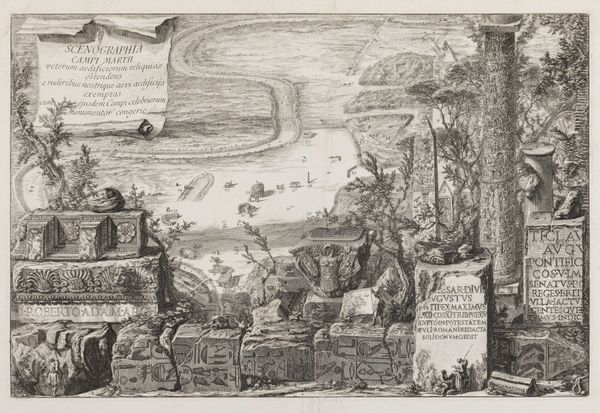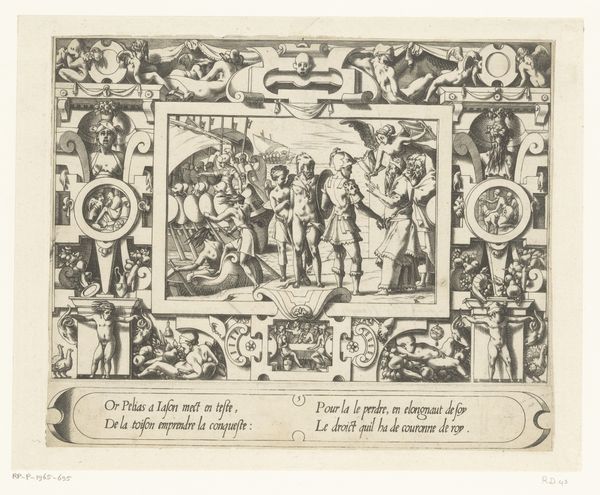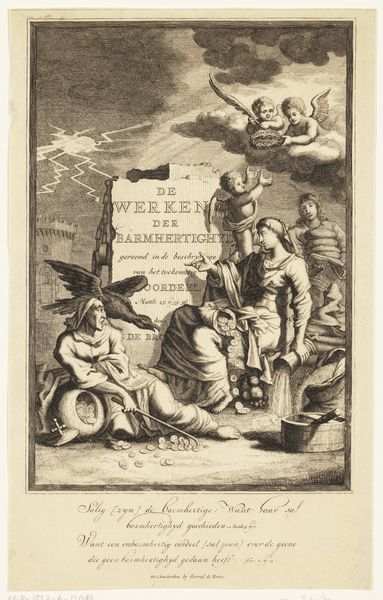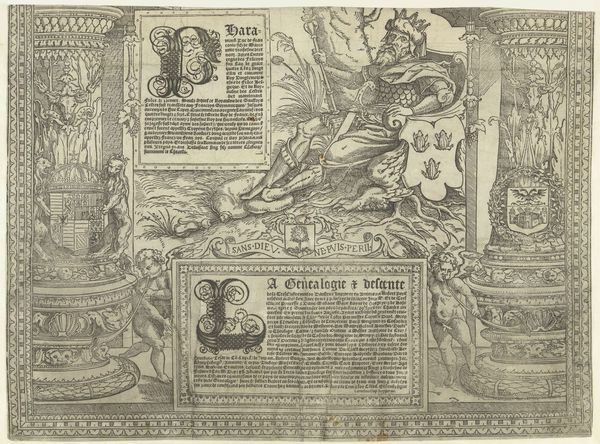
graphic-art, print, engraving
#
graphic-art
#
allegory
# print
#
landscape
#
mannerism
#
form
#
geometric
#
line
#
cityscape
#
history-painting
#
engraving
Dimensions: 205 mm (height) x 255 mm (width) (monteringsmaal)
Editor: This engraving, "The Story of Dinah and Shechem" by Harmen Jansz. Muller, created between 1567 and 1570, strikes me as intensely symbolic. The central figures and surrounding objects appear to convey a moral message. How do you interpret this complex scene and its relationship to the socio-political context of its time? Curator: The engraving certainly reflects the anxieties of the period. We must look at it not just as a historical illustration but as a commentary on the power dynamics of the 16th century. Engravings like these were often commissioned or circulated to promote specific ideologies, especially during periods of religious or political upheaval. Who controlled the narrative, and how did they use imagery to shape public opinion? Editor: So, the artist’s choices - like the figures, the text boxes surrounding the composition, and maybe even the city in the background- might be reflecting these dominant views? Curator: Precisely! Consider the intended audience for this print. It likely circulated among educated elites. The artist uses classical allusions, biblical narrative, the borders depicting the consequences and outcomes in this context were tools to persuade them of a particular moral or political stance. It begs the questions, did art like this reinforce or challenge established power structures? Editor: That makes a lot of sense. Looking at it now, the city becomes much more than just a backdrop; it is integral to understanding what messages were being put forth. Curator: And don't overlook how the print's physical circulation contributed to its impact. Prints were relatively accessible, which provided artists a wider audience than paintings afforded. How does the rise of printmaking intersect with the changing roles of artists and the public sphere? Editor: I hadn't thought about that connection. Thanks, now I see how understanding the history surrounding the work adds layers of meaning. Curator: And I learned how important the material reality of the print is to your generation. The layering and complexity provides depth beyond the historical and cultural references!
Comments
No comments
Be the first to comment and join the conversation on the ultimate creative platform.
